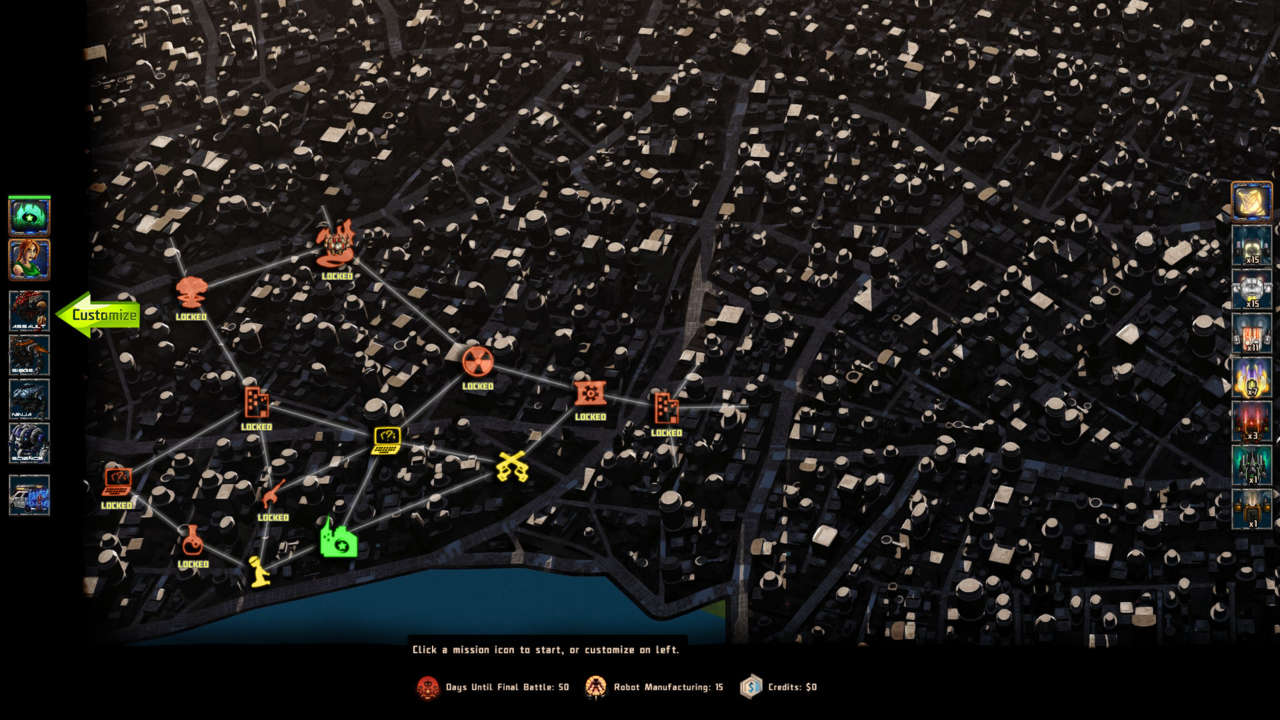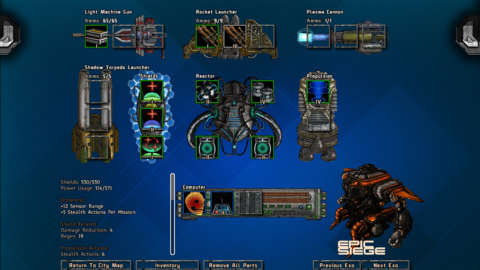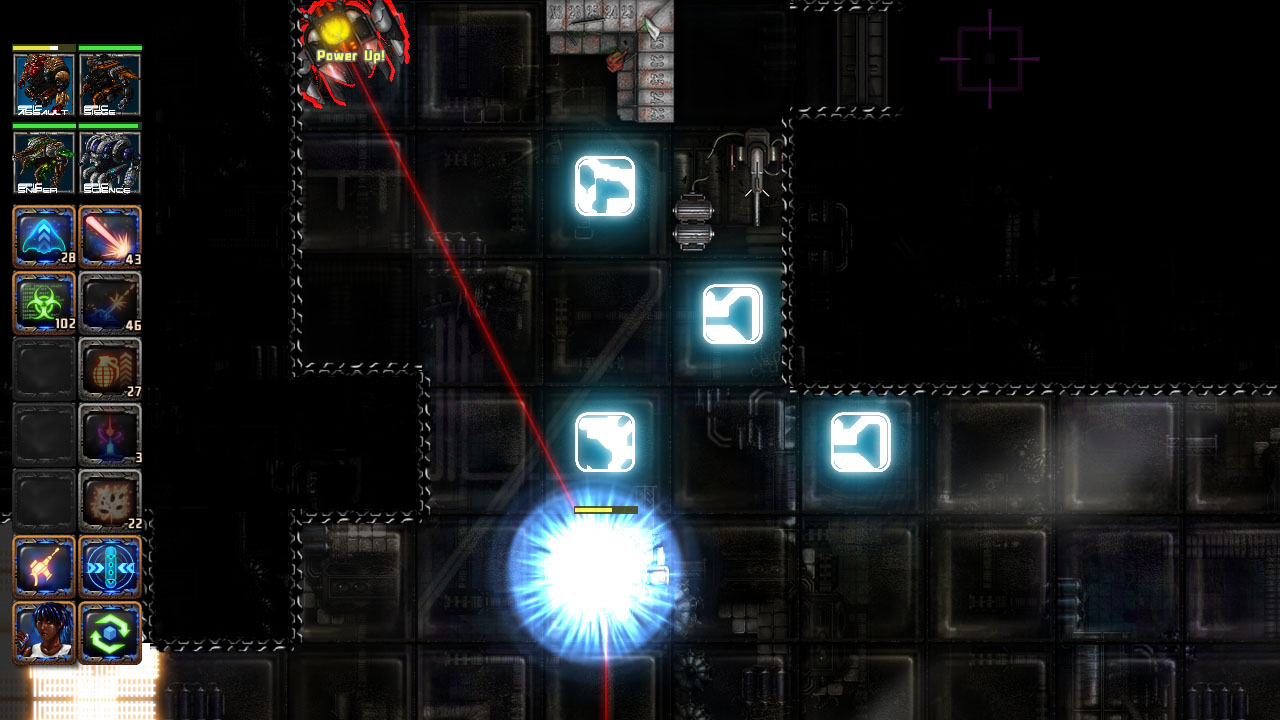Bionic Dues takes place on the eve of a robot invasion, and everywhere signs suggest that the fault for their ascendency lies with us. This is a cruelly mechanical world devoid of natural comforts, from the city map that resembles a circuit board to the cold interface that envelops the entire experience. Aside from some illustrated avatars for mech pilots, it's not clear where the lines between humanity and robotica stand. Therein may lie some of the reason for Arcen's oddball title for this new roguelike, which manages to entertain and challenge despite its underwhelming presentation.
It's gloomy stuff, to be sure, but it also serves as a complementary setting for the Sisyphean gameplay common to the roguelike genre. Failure is generally the rule--not success--and winning usually involves overcoming seemingly impossible odds to achieve victory. That was true of 2012's wonderful Faster Than Light, which sent us careening through space in a tiny Firefly-like spacecraft, and it's also true of Bionic Dues, which trades out the space setting for an apocalyptic vision that's more closely inspired by the MechWarrior universe.

In this case, Bionic Dues gains much of its tension from the mere 50 days you have to prepare before the robot army storms the city with the intention of eradicating all human life. But rather than keeping the robots a distant threat, Arcen sprinkles their operations about the city where they assemble the war machine needed to complete the conquest. The result is an astonishingly varied assortment of missions, with each mission representing a day until the final match and an opportunity to alter your chances in the endgame.
Barging your way through multiple weapon facilities might mean you'll have plenty of big guns when the big day comes, but it'll mean little if you've spent your 50 days ignoring the production facilities where the enemy crafts its legions. Let them go unchecked for too long, and you'll find yourself facing down a swarm that even the biggest guns are powerless to eradicate. Because the designs are procedually generated, Bionic Dues sidesteps the inherent danger of dull repetition.

The initial missions kick off with ease, but quickly increase in difficulty as the robots make their own advances in the arms race. The learning curve ensures that it's hard enough on normal, and I admit that it took me over an hour to progress past the first two missions in the aptly named misery mode. Four other difficulties allow you to cater your experience as you wish, and an iron man mode scraps the default save-at-will option for a traditional roguelike model that forces you to live with both your successes and failures. But success is so important that I sometimes found myself completely restarting after a single failed mission.
Bionic Dues manages to entertain in spite of this punishing design in part because the combat is so fun. At the beginning of each playthrough, you select four out of a possible seven exos (Arcen's name for mechs) along with one of six associated pilots that grant boosts such as discounted items in the store or the chance of better loot drops.
Such a setup encourages experimentation to find the team that best suits your play style. Brawlers, for instance, thrive on smashing in enemy faces, while ninjas can sneak past enemies (despite their multi-ton bulk, apparently). Scientist exos are almost always a must, because only they can perform the feats of hacking necessary to access the richest loot troves. Even so, loot falls swiftly enough to rekindle memories of Diablo and Torchlight, although the process of comparing and switching out gear between the four mechs grows tiresome between rounds.
Bionic Dues breezes along at a brisk rate. The combat may be turn-based, but with movement mapped to the WASD keys and abilities mapped to the mouse and hotkeys, actions unfold quickly enough that onlookers could mistake it for a rudimentary take on XCOM. You only play as one mech at a time, which requires that you strategically juggle to keep all mechs alive and in play. As in the mission map, every move can change the game. Do you send a missile with area-of-effect damage into a mosh pit of clumped robots? Doing so could trigger a stackable EMP charge that could leave your mech in play disabled for several rounds. Bionic Dues brims with decisions like these, and the best part is that failures feel as though they spring from poor decisions rather than oppressive design.

A challenging design, yes, but all that pressure means the actual scenario feels about as hopeful as Gillian Welch reading Cormac McCarthy's The Road to the tune of Samuel Barber's Adagio for Strings. Arcen tried to inject some needed humor into the experience, but it doesn't always work. I admit I laughed the first time a dying robot cried out, "Why was I programmed with feelings?" but that initial amusement diffused long before the 50th time I'd heard it. The catchy retro-themed music (save for a cringe-worthy title screen track) picks up some of the rest of the slack, even if some tracks were pulled from earlier Arcen releases. But for me, at least, nothing ever made up for the bleak setting. Both the fog of war and the general background consist of little more than inky blackness, and the blocky grids for mission maps look barely different from the UI slots that surround them. For a game that's about the dogged survival of the human race, Bionic Dues all too often seems to present a robot's view of the world.
And yet, for all that, Arcen's latest delivers an undeniable rush of triumph once you manage to overcome the final confrontation. Most times you'll fail, however, but if you're not put off by the limitations of the presentation and the sheer brutality of Bionic Dues' challenges, you'll find an enjoyable roguelike that rewards your persistence and determination.